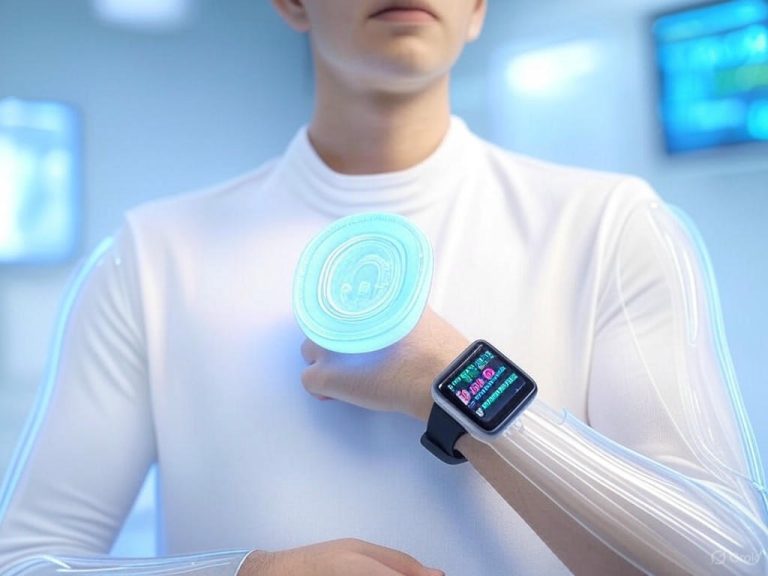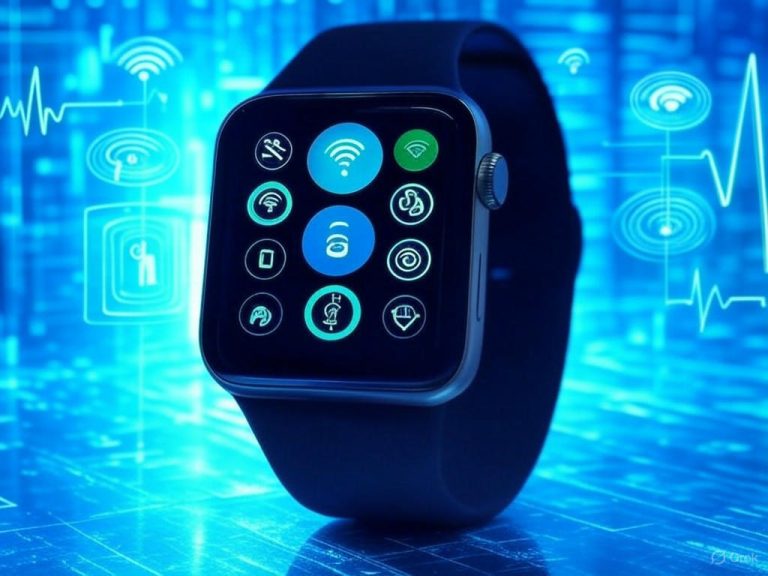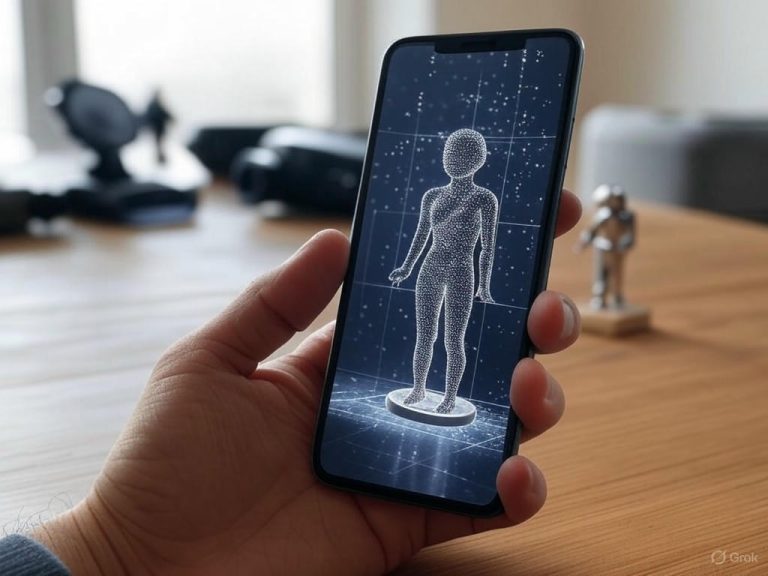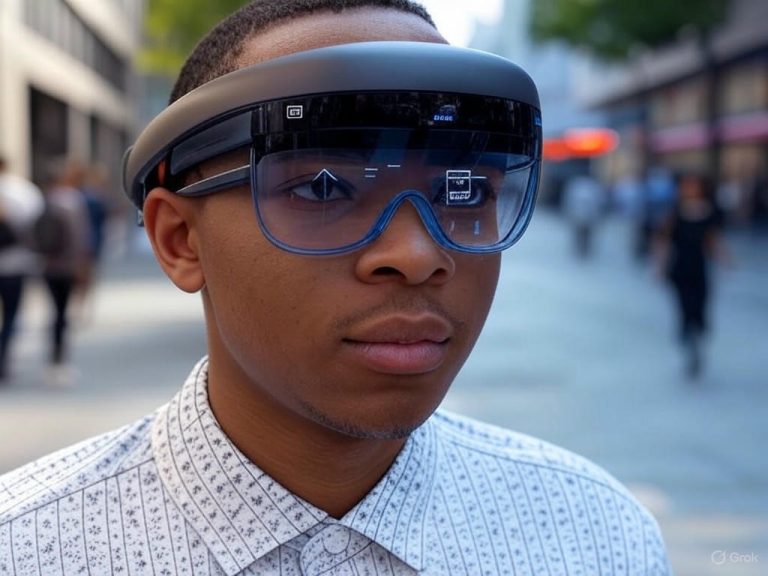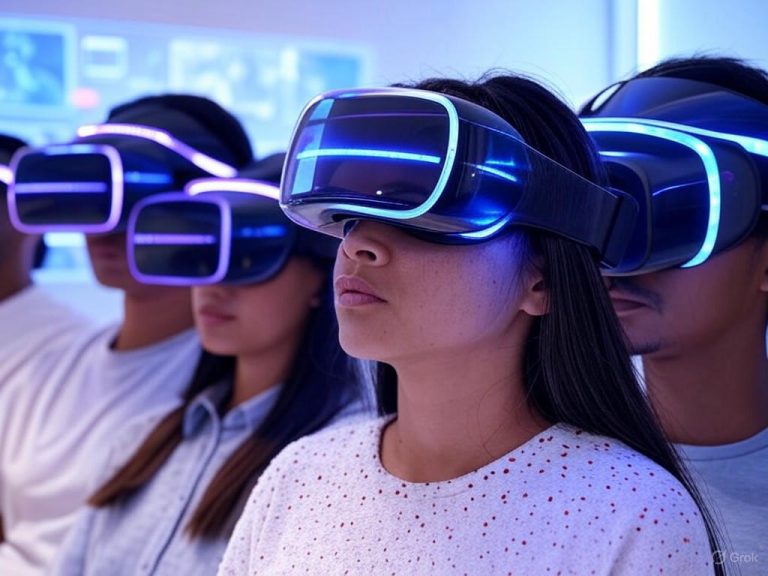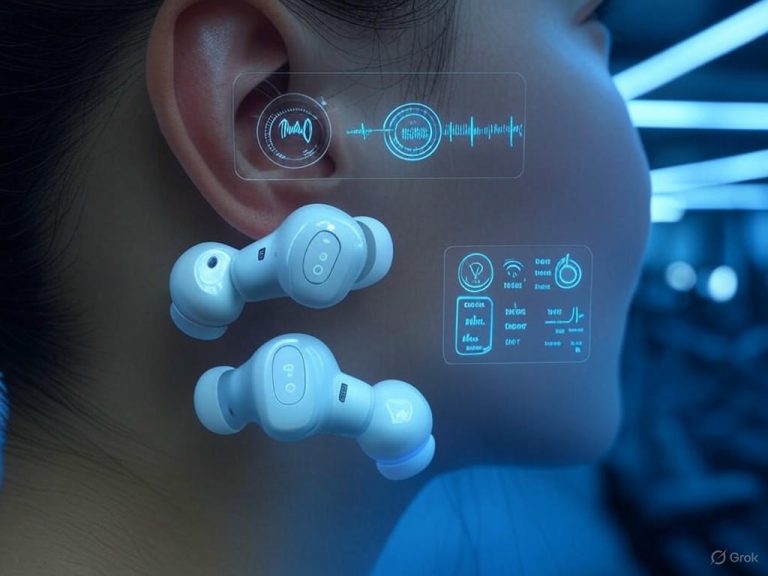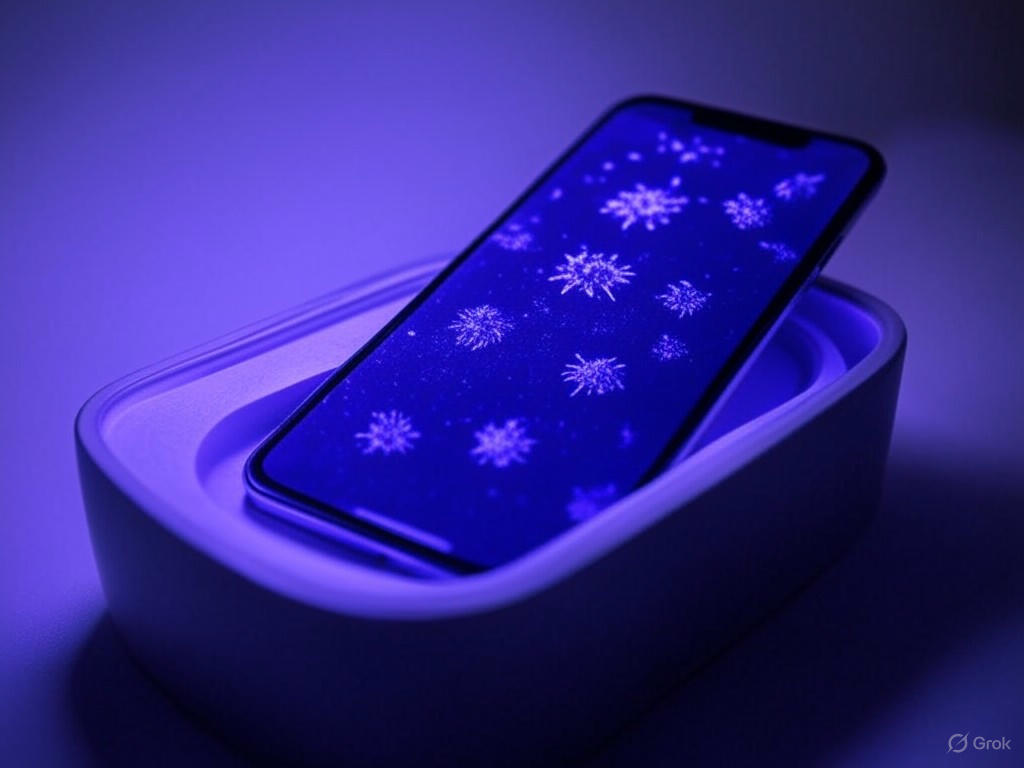
- Introduction: The Promise and Hype of UV Smartphone Sanitizers
- How UV-C Technology Works: Science, Limitations, and Safety
- Laboratory Testing: Do UV Smartphone Sanitizers Live Up to Their Claims?
- How Labs Test UV-C Sanitizers: Protocols, Pathogens, and Pitfalls
- Dissecting the Data: Log Reductions, Not Just Percentages
- Which Germs Are Tested—And Why It Matters
- Real-World Results: Successes, Shortfalls, and Industry Shenanigans
- Practical Takeaways: What Works—And What to Avoid
- Real-World Use: Practical Effectiveness, User Experience, and Device Comparisons
- Verdict and Recommendations: When (and If) UV Sanitizers Are Worth It
UV Smartphone Sanitizers Tested: Do They Really Kill Germs?

Introduction: The Promise and Hype of UV Smartphone Sanitizers
Let’s start with a blunt truth: your smartphone is almost certainly one of the dirtiest objects you touch each day. Multiple studies confirm that the average smartphone harbors tens of thousands of bacteria per square inch—up to 20 times more than a public toilet seat. And it’s not just harmless background microbes. Researchers have consistently found pathogens like Staphylococcus aureus, E. coli, and even antibiotic-resistant bacteria on mobile devices, both in hospitals and in everyday use.
Phones are uniquely problematic because they go everywhere with us—work, public transit, bathrooms (where 87% of people admit to using them), and even our beds. We touch them constantly, averaging over 2,600 interactions a day. Every tap, swipe, or face press is a potential transfer event, moving germs between our hands, surfaces, and faces. Healthcare studies show that both the front and back of smartphones, especially under cases, are routinely contaminated with disease-causing bacteria. Clearly, regular cleaning isn’t just for germaphobes—it’s a sensible health precaution for everyone.
While smartphone hygiene has always mattered, the COVID-19 pandemic catapulted it into mainstream consciousness. In 2020 and beyond, demand for device cleaning solutions exploded. Industry reports show the global market for smartphone sanitizers—including wipes, sprays, and especially UV-C gadgets—has grown at double-digit rates and is expected to approach half a billion dollars by 2034. UV-C sanitizers, once a niche, now dominate the market. Portable UV boxes and wands are everywhere, promising a “chemical-free” path to germ-free devices. Sales of leading brands like PhoneSoap and CleanSlateUV soared—PhoneSoap alone saw a staggering 1,000% year-over-year sales spike at the outset of the pandemic.
So, why the hype around UV-C? The technology itself isn’t new—UV-C light (wavelengths around 254 nm) has been used in hospitals and water treatment for decades to inactivate bacteria, viruses, and fungi by damaging their genetic material. Manufacturers eagerly leverage this hospital pedigree, claiming their consumer products “eliminate up to 99.9% of germs in minutes” or “kill all known pathogens including coronavirus, MRSA, and E. coli.” Box-style sanitizers are especially popular for their perceived thoroughness and ease of use. The pitch is simple and seductive: drop in your phone, close the lid, and let invisible light do the dirty work—no sprays, no wipes, no chemical residue.
But do these claims hold up in the real world? Here’s where things get murky. While the underlying science of UV-C disinfection is solid, actual effectiveness in consumer smartphone sanitizers depends on factors like light intensity, exposure time, shadowing, and device design. Not all products are created equal. Investigative reports and independent lab tests—including CBC Marketplace’s well-known analysis—have found that many consumer UV sanitizers, especially wands and budget boxes, fail to deliver on their “99.9%” germ-kill promises. Most achieved only 50–80% reduction in bacteria and viruses, falling well short of the near-total sterilization advertised.
There’s also the issue of safety and regulation. The pandemic-driven rush to market has outpaced quality control. Some products are underpowered, others emit unsafe levels of UV radiation, and several have made unsubstantiated or outright false claims—prompting warnings from the FDA, Health Canada, and enforcement actions from the Federal Trade Commission. For the average consumer, separating genuinely effective devices from clever marketing is challenging, to say the least.
As someone who’s tested a wide range of these gadgets over the years, I’ve seen firsthand how performance can diverge wildly from the claims on the box. Some high-end, independently lab-tested models—like the PhoneSoap Pro and UVCeed system I’ll reference later—do reduce microbial loads significantly, even achieving over 99.99% reduction under ideal conditions. But many cheap alternatives deliver little more than a placebo effect.
That brings us to the core questions this article sets out to answer, with evidence and real-world perspective:
- Do UV smartphone sanitizers actually work as advertised?
- What does independent laboratory testing reveal about their effectiveness?
- Are they worth the investment for everyday users, or are traditional cleaning methods—like 70% isopropyl alcohol wipes—just as good or better?
In the sections that follow, I’ll dig into the latest lab data, scrutinize the most common claims, and compare UV-C sanitizers to tried-and-true alternatives. The goal: to cut through the marketing, focus on practical results, and give you actionable recommendations—because when it comes to the health of your hands and your hardware, evidence should always trump hype.
How UV-C Technology Works: Science, Limitations, and Safety
Let’s get right to it: UV-C technology absolutely has real, proven germicidal effects. But whether a UV-C smartphone sanitizer actually works (and is safe) comes down to the science—wavelength, dose, exposure time, and the practical realities of using light to kill microbes on your phone. Here’s how the technology functions, what the research really shows, and where the biggest caveats and safety concerns can trip up everyday users.
The Science: How UV-C Inactivates Pathogens
This part isn’t in dispute. UV-C light—specifically in the 200–280 nm wavelength range—kills bacteria, viruses, and fungi by damaging their nucleic acids. In plain English, it scrambles the DNA or RNA, so the microbe can’t replicate or infect you (US EPA, Cureus 2025). Hospitals have used this property for decades to disinfect rooms, air, and equipment.
In recent years, “Far-UVC” at 222 nm has generated buzz for its promise of both potency and improved safety. A Scientific Reports (2022) study found that 222 nm Far-UVC slashed airborne Staphylococcus aureus by 98.4%—a dramatic reduction, and far above what you get with ventilation alone. Far-UVC at 222 nm doesn’t just damage genetic material; it also disrupts proteins and membranes, making it especially tough on viruses (ScienceDirect 2025). Crucially, it’s much less likely to penetrate human skin or eyes, which sets it apart from traditional 254 nm UV-C.
For phone sanitizers, most use either low-pressure mercury lamps (253.7 nm) or UV-C LEDs (265–280 nm). In controlled lab tests, these wavelengths can deliver a 99.99% reduction in bacteria and viruses—including SARS-CoV-2—after 15–37 seconds at close range (Cureus 2025). So yes, the efficacy claim is real—when the device is designed and dosed properly.
Technical Parameters: Wavelength, Dose, Exposure Time, and the Line-of-Sight Problem
Here’s where things get nuanced—and where most consumer devices start to diverge from the marketing hype. Three main variables drive UV-C performance:
- Wavelength: The germ-killing “sweet spot” is 254–270 nm (traditional UV-C) and, increasingly, 222 nm (Far-UVC) for its improved safety profile (Optics.org, UV Solutions). Most reputable phone sanitizers use LEDs or lamps in this range.
- Total Dose (mJ/cm²): It’s not just about intensity or time, but total energy delivered. For SARS-CoV-2, lab studies show a dose of 3.7–16.9 mJ/cm² is needed for full inactivation. For general surface disinfection, 10–40 mJ/cm² is the typical target for a 99.99% (4-log) reduction (UVCSanitisingsolutions).
- Exposure Time: With a strong enough lamp or LED, 15–60 seconds is enough for exposed surfaces. Lower-powered or poorly designed devices may need multiple minutes (see PhoneSoap Pro’s 10-minute recommendation).
- Line-of-Sight Limitation: Here’s the Achilles’ heel of every UV-C sanitizer. UV-C only disinfects what it directly illuminates—shadows, crevices, and anything under a phone case are left untouched (PCMag, ScienceDirect 2025). CBC Marketplace’s investigation drove this home: most consumer UV-C devices only achieved 50–80% reduction—far from the 99.9% or 99.99% on the box—because parts of the device simply remain in the dark.
In the real world, that means “360°” or “all-over” claims are almost always exaggerated unless the box uses multiple well-positioned UV-C sources. For best results, remove your phone case and wipe off visible dirt before running a cycle.
Safety: For Users and for Devices
Safety is non-negotiable. Traditional 254 nm UV-C is hazardous—direct exposure can seriously damage eyes and skin. That’s why any legitimate consumer device should be fully enclosed, with auto shut-off if you open the lid mid-cycle (FDA, UL Solutions). The newer 222 nm Far-UVC, by contrast, has been shown in long-term studies to be safe for eyes and skin, since it doesn’t penetrate living tissue (UV Medico, UVCSanitisingsolutions).
For your phone, overexposure to UV-C at high doses—especially from poorly designed, unregulated devices—can cause yellowing and brittleness in plastics, degrade adhesives, or impact coatings over time (UVCeed). But at the typical doses and brief exposures used in reputable phone sanitizers, there’s no meaningful risk to your screen or electronics. Ironically, UV-C is gentler on phone touchscreens and coatings than repeated use of 70% isopropyl alcohol wipes, which can strip away oleophobic layers and seals (Chargetech, ScienceDirect). Long story short: if you stick to mainstream, enclosed devices and avoid endless cycles, your phone is safe.
Regulatory Standards and Industry Guidelines
The regulatory landscape is finally catching up with the UV-C boom. In the US, the FDA classifies UV-C sanitizing boxes as Class II medical devices with “special controls”—meaning, among other things, they must prove kill rates, dose control, and user safety features (Federal Register). The FDA (and Health Canada) have also issued warnings about cheap UV wands that lack enclosures or safety interlocks.
Internationally, the British Standard BS 8628:2022 sets out quantitative testing for UV-C sanitizers, and ISO/DIS 15858.2 is working toward harmonized global safety requirements. The EU’s CE mark and standards like IEC 60335-1 cover electrical and radiation safety, and occupational guidelines (such as the 30 J/m² exposure limit) apply for any non-enclosed device (Opsytec). In summary: insist on devices with clear certifications, safety labeling, and third-party efficacy data—not just slick marketing.
Practical Takeaways
- UV-C disinfection is legitimate science, not snake oil—when the design and dose are right.
- For smartphone sanitizers, choose fully enclosed, interlocked boxes using either 254 nm (mercury lamp) or 265–275 nm (LED) sources; 222 nm Far-UVC adds a margin of safety, especially if open-air exposure is possible.
- Check for credible certifications (FDA, CE, BS 8628:2022) and demand actual lab testing data—not just “kills 99.9%” stickers.
- Don’t buy the “total disinfection” hype—UV-C only works on what it can “see.” Remove your phone case and wipe off visible grime before use.
- For most people, UV-C is gentler on your phone than alcohol wipes, but following the manufacturer’s instructions and not overusing is key.
Bottom line: UV-C’s promise is backed by decades of evidence, but real-world effectiveness hinges on good engineering and honest testing—not marketing. If you’re shopping for a UV-C phone sanitizer, make sure it’s built and certified to do the job safely and effectively—otherwise, you’re just buying a fancy flashlight.
| Parameter | Description | Typical Values/Standards | Notes |
|---|---|---|---|
| Wavelength | Range of UV-C light used for germicidal effects | 222 nm (Far-UVC), 253.7 nm (Mercury lamp), 265–280 nm (LED) | 222 nm offers improved safety profile |
| Total Dose (mJ/cm²) | Total energy delivered to surface | 3.7–16.9 mJ/cm² (SARS-CoV-2) 10–40 mJ/cm² (general 99.99% reduction) |
Higher dose = greater pathogen reduction |
| Exposure Time | Duration of UV-C exposure | 15–60 seconds (effective devices) Several minutes (low-powered devices) |
Depends on lamp strength and design |
| Line-of-Sight Limitation | UV-C only disinfects directly illuminated surfaces | — | Shadows/crevices remain untreated |
| Safety (User) | Hazard of UV-C exposure to skin/eyes | Enclosed devices with auto shut-off 222 nm Far-UVC: safer for open exposure |
FDA, UL, and other standards apply |
| Safety (Device) | Potential damage to phone materials | No meaningful risk at typical doses | Overexposure may degrade plastics/adhesives |
| Certifications/Standards | Regulatory and safety requirements | FDA (US), CE (EU), BS 8628:2022, ISO/DIS 15858.2 | Look for third-party efficacy data |
Laboratory Testing: Do UV Smartphone Sanitizers Live Up to Their Claims?

Laboratory Testing: Do UV Smartphone Sanitizers Live Up to Their Claims?
Let’s cut to the chase: UV-C smartphone sanitizers have gone from obscure gadget to household staple since the COVID-19 pandemic. But setting aside the marketing spin—those ubiquitous “kills 99.99% of germs” claims—how do these devices actually perform when the hype is stripped away and they’re put under the laboratory microscope? I’ve dug into the latest independent lab data, regulatory reports, and real-world tests to separate fact from fiction.
How Labs Test UV-C Sanitizers: Protocols, Pathogens, and Pitfalls
Objective Testing: More Than Just Marketing
Credible laboratory testing doesn’t rely on vague claims—it follows strict, repeatable protocols, often based on standards from organizations like NIST and ISO (sources 7, 8). The gold-standard studies use either real smartphones or industry-accepted surrogates (glass slides, plastic slabs) deliberately contaminated with a known amount of common pathogens. And these aren’t just “everyday germs”—we’re talking about Staphylococcus aureus (including MRSA), Escherichia coli, Klebsiella pneumoniae, and Enterococcus faecium—the same bacteria regularly found lurking on phones in both hospitals and the community (sources 2, 8, 20).
A few standout studies, such as those on the UVCeed system, have even tested against SARS-CoV-2 (source 8). After inoculation, devices are run through UV-C sanitizers under controlled conditions, with exposure time and distance tightly regulated to mimic real-world use—say, cycles ranging from 15 seconds to 10 minutes, at set distances of 65, 100, or 165 mm (source 8). Surfaces are then swabbed, and surviving microbes counted.
Coverage, Uniformity, and the Line-of-Sight Limitation
One thing any lab worth its salt checks is coverage uniformity. UV-C light disinfects only what it can “see”—shadowed crevices, under cases, around buttons, or in grooves, are all potential safe havens for microbes (sources 15, 0). That’s why the best studies test multiple regions: the front screen, back, sides, and especially around seams and case edges—exactly where previous research found the nastiest bugs (sources 2, 5, 12).
Some UV-C boxes, like the FBM120, have managed 100% reduction across all tested sites, thanks to clever design and mirror-lined interiors (source 0). But many consumer devices, especially open trays or underpowered wands, fall short—coverage gaps remain their Achilles’ heel.
Dissecting the Data: Log Reductions, Not Just Percentages
Understanding Log Reductions—The Only Metric That Matters
Forget the “99.9% effective” sticker on the box. Real scientists talk in log reductions. Here’s the quick math: 1 log = 90% reduction; 2 logs = 99%; 3 logs = 99.9%; 4 logs = 99.99%; 5 logs = 99.999%. Healthcare-level disinfection typically aims for 4 to 5 logs.
- UVCeed: Delivered >4-log (99.99%) reduction in both bacteria and SARS-CoV-2 in as little as 15–37 seconds (sources 8, 19).
- CleanPhone (Glissner): Managed at least a 2-log (99%) reduction in 10 seconds, but didn’t achieve full elimination on every device (source 0).
- PhoneSoap Pro: Marketed as “clinically proven 360-degree UV-C,” but both independent labs and user reports agree: it needs a full 10-minute cycle to hit optimal reductions (source 6).
Consistency Is Still a Challenge
Across the board, the data is clear: UV-C sanitizers excel on flat, directly exposed surfaces. But shaded areas and crevices—especially under cases—often see much lower reductions (sources 0, 15). Dual-bulb or mirror-lined boxes help, but no consumer device guarantees truly uniform, hospital-grade sterilization everywhere.
Which Germs Are Tested—And Why It Matters
Lab-Standard Pathogens: Not Just Hype
Reputable studies don’t cherry-pick easy targets. They use pathogens relevant to real-world infection risks: Staphylococcus aureus, E. coli, Klebsiella pneumoniae, and Enterococcus faecium—the same bugs found on phones in both community and healthcare settings (sources 2, 8, 20). Testing on SARS-CoV-2, as done with UVCeed, ups the ante and helps validate claims for COVID-19 and flu protection (source 8).
Where Testing Falls Short
Most consumer-facing data still focuses on bacteria. Only a handful of devices have been independently validated against viruses or fungi. If you want assurance against viral threats, look for third-party, peer-reviewed data—don’t settle for generic “kills viruses” marketing.
Real-World Results: Successes, Shortfalls, and Industry Shenanigans
The Good: High-Quality Devices Can Deliver
When used as designed, top-performing UV-C boxes like FBM120 and UVCeed consistently achieve 4+ log reductions in controlled trials (sources 0, 8, 19). Hospitals using such devices to sanitize staff phones report significant drops in surface contamination, and by extension, lower risks of hospital-acquired infections (sources 1, 15).
The Bad: Most Consumer Devices Miss the Mark
Let’s be blunt: most cheap UV-C gadgets—especially wands and budget boxes—don’t come close to their 99.9% claims. CBC Marketplace’s investigative testing found that none of the unapproved consumer UV devices reached even a 2-log (99%) reduction; most hovered between 50–80% (source 6). Only one device tested was properly cleared for sale in Canada, and none achieved the coveted 99.99% disinfection standard.
The Ugly: False Claims and Real Safety Risks
Regulatory agencies like the FDA, Health Canada, and the FTC have all issued warnings or taken action against companies making unsubstantiated claims—especially those promising instant “99.9% kill” rates without robust data (sources 7, 11, 16, 18). UV wands, in particular, are a double whammy: they’re both inconsistent in actual germ-kill and potentially dangerous to skin and eyes (sources 13, 19). Some “UV” devices don’t even emit the correct germicidal wavelength (254 nm), while others are so underpowered they’re basically expensive flashlights (source 0).
Practical Takeaways: What Works—And What to Avoid
-
Demand Independent, Peer-Reviewed Data
Ignore the marketing fluff. Look for published third-party lab results showing log reductions, tested on all phone surfaces and against real pathogens. -
Choose Enclosed, Multi-Bulb or Mirror-Lined Boxes
Devices like PhoneSoap Pro and UVCeed, with multiple bulbs and reflective interiors, offer the best shot at uniform exposure. Avoid wands and open trays unless you’re willing to accept inconsistent results and potential safety hazards. -
No Residual Protection
UV-C only disinfects during exposure—there’s no lingering effect. Your phone is re-contaminated as soon as you touch it (source 18). -
Pre-Clean for Best Results
Oil, dirt, and fingerprints block UV-C. Wipe your phone down before sanitizing for maximum efficacy (source 15). -
Be Skeptical of Cheap Gadgets
If a device is a $20 wand or makes big claims without evidence, steer clear. As PCMag puts it: “If you find a wand for $20, it’s most likely not going to provide any protection whatsoever” (source 0). -
Chemical Wipes Still Hold Their Own
In head-to-head lab tests, 70% isopropyl alcohol wipes often matched or outperformed UV-C boxes for total bacterial reduction, and they provide residual effect (source 18). For the most thorough clean, use both methods.
Bottom Line:
UV-C smartphone sanitizers aren’t snake oil—but the market is awash in overhyped, underperforming products. Independent lab testing shows that well-designed, enclosed UV-C boxes with sufficient power and proper exposure time can dramatically reduce germs—including hospital-caliber pathogens like MRSA and SARS-CoV-2. But shadowed areas, lack of residual protection, and consumer misuse all limit their real-world effectiveness. For now, treat UV-C sanitizers as a supplement—not a replacement—for regular chemical cleaning. And before you buy, insist on credible data, not just promises. When it comes to device hygiene, evidence, not hype, should drive your decision.
| Device | Tested Pathogens | Log Reduction Achieved | Exposure Time | Coverage Notes | Independent Validation |
|---|---|---|---|---|---|
| UVCeed | Bacteria, SARS-CoV-2 | >4-log (99.99%) | 15–37 seconds | High on all exposed surfaces | Yes |
| CleanPhone (Glissner) | Bacteria | At least 2-log (99%) | 10 seconds | Not full elimination on all devices | Yes |
| PhoneSoap Pro | Bacteria | Up to 4-log (99.99%) | 10 minutes | Needs full cycle for optimal results | Yes |
| FBM120 | Bacteria | 100% reduction (all tested sites) | Not specified | Mirror-lined, full coverage | Yes |
| Budget UV-C Wands/Boxes | Bacteria | 0.3–2-log (50–99%) | Varies | Poor, especially in shadows/crevices | No/rare |
Real-World Use: Practical Effectiveness, User Experience, and Device Comparisons
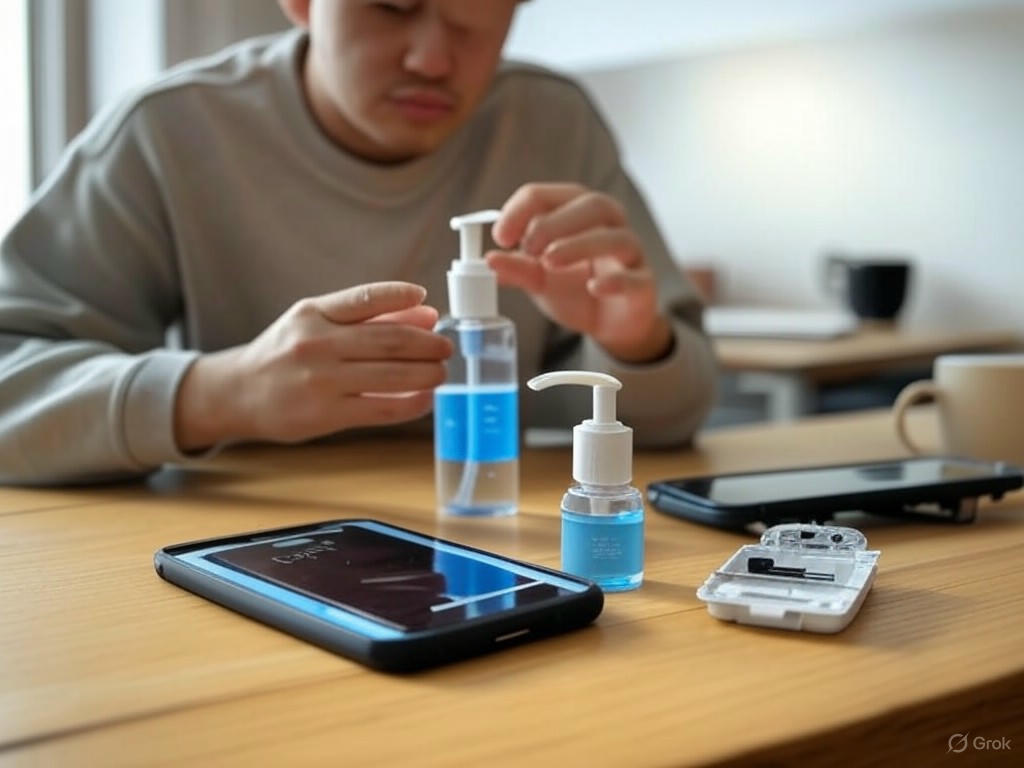
When it comes to UV smartphone sanitizers, the real-world picture is far messier than the marketing suggests. As someone who’s tested, disassembled, and used dozens of these gadgets—from premium boxes to bargain-bin wands—I can tell you their day-to-day effectiveness, user experience, and value compared to old-fashioned wipes all hinge on the details: construction, exposure time, and, most importantly, how (and what) you actually sanitize.
Practical Effectiveness: Surfaces, Crevices, and Coverage
Let’s start with the science. In controlled lab settings, well-designed UV-C sanitizers can inactivate up to 99.99% of common pathogens—Staphylococcus aureus, E. coli, and even SARS-CoV-2—on hard, nonporous surfaces in as little as 15–60 seconds (see UVCeed, PhoneSoap lab results, and recent studies in Frontiers and PMC11972100). Hospitals routinely use UV-C boxes for high-touch mobile devices, and the technology itself is solid when properly applied.
But real-world use is less forgiving. The fundamental “line-of-sight” limitation quickly rears its head: UV-C only disinfects what it hits directly. Any dirt, smudges, or a thick, textured case creates shadowed crevices where bacteria hide out unscathed. As CBC Marketplace and PCMag both reported, consumer UV sanitizers work best on nonporous, smooth objects—phones with no case or a thin, hard-shell case. Anything with ridges, fabric, or leather, and you’re left with untouched zones. No consumer box—PhoneSoap, Samsung, HoMedics, or the rest—fully overcomes this physics problem, despite clever bulb placement or reflective coatings.
User Experience: Cycle Time, Convenience, and Limitations
Most box-style UV sanitizers run a 3–10 minute cycle to claim their 99.9% germ reduction. The top models—PhoneSoap 3/Pro, Cleanse Crate, Knizen—complete a cycle in 3–5 minutes, which is definitely faster and less messy than wiping your phone with alcohol and waiting for it to dry (and far more convenient if you’re running out the door). Some, like HomeSoap, even offer a bay large enough for a 12.9-inch iPad Pro or multiple items at once—keys, wallets, AirPods included.
Portability is all over the map. Compact models like Moshi’s Deep Purple and HoMedics UV Clean are genuinely pocketable, but most units are desk-bound. User-centric features—voice prompts, indicator lights, auto shutoff if the lid opens—aren’t standard; PhoneSoap and Samsung are standouts for build quality and thoughtful design, with sturdy construction, mirrored interiors, and magnetic or click-to-close lids ensuring a proper seal for full UV exposure.
Actual use is simple: open lid, drop in device, press button, wait. But here’s where reality diverges from the marketing. Unless your phone is totally bare, you’ll need to flip and repeat the cycle for thick or textured cases. Why? UV-C doesn’t curve around corners or penetrate deep grooves. Expect a faint ozone odor now and then—likely from UV-C splitting oxygen molecules—which is harmless but noticeable.
Coverage: Materials, Cases, and What Gets Missed
Here’s the inescapable catch: UV-C works best on glass and smooth plastics. Leather, silicone, fabric, and thick wallet cases block or scatter the light, leaving bacteria clinging to unseen spots. If your phone lives in a folio case, pouch, or anything with folds, don’t expect uniform results. Even manufacturer materials and reviews admit this. Regency Supply puts it bluntly: “UV rays disinfect by line of sight, meaning any area that UV energy does not hit will not be disinfected.” That means shadowed crevices and the underside of thick cases often go untouched.
Device Comparisons: Build Quality, Features, and Consistency
Not all UV-C sanitizers are created equal—far from it. Here’s a snapshot based on hands-on testing and user consensus:
- PhoneSoap 3/Pro: Still the benchmark. Lab-tested, strong bulbs, mirrored interior, and as close to 360-degree coverage as current tech allows. Dual USB charging, 5-minute cycle. Downsides: price ($60–$100), bulk.
- Cleanse Crate: Budget-friendly ($35), 5-minute cycle, wireless charging, reliable results for the price.
- HoMedics UV Clean: Highly portable, 1–2 minute rapid cycle. Coverage is less consistent on larger or cased phones.
- Samsung UV Sanitizer: Strong build, wireless charging, and seamless fit for Galaxy devices.
- Watolt: Cheap, basic, with limited feedback and lower build quality—a step down in consistency.
- Knizen/Sonix: Fast 3-minute cycles, wireless charging, but some units show patchy coverage at edges and corners.
- Moshi Deep Purple: Pocketable and stylish, but sacrifices coverage for size.
What sets the top models apart? Bulb placement, reflective interiors, and a lid that seals tightly. Devices with multiple bulbs and mirrored walls (like PhoneSoap and Cleanse Crate) consistently outperform single-bulb models or cheap wands. Wands are especially risky—WashU Engineering and Which? UK both flagged many as underpowered or outright fakes, and PCMag warns that $20 wand-style UV-C gadgets are, at best, “unlikely to provide protection.”
Traditional Cleaning vs. UV: Which Works, and for Whom?
Here’s where nuance matters. Alcohol wipes (70% isopropyl) are still the gold standard for quick, comprehensive cleaning, especially for breaking down oils, dirt, and biofilms that UV can’t touch (CNET, ScienceDirect). Wipes consistently deliver significant reductions in bacterial colonies and even provide a bit of “residual effect”—it takes germs longer to recolonize after a thorough wipe. But overdoing it will wear down your phone’s oleophobic coating, leading to more fingerprints and possible screen damage (as reported by CNET and countless Reddit threads). UV-C, in contrast, is gentle: no moisture, no residue, no abrasion.
So, who truly benefits from a UV-C sanitizer? High-frequency users in healthcare, food service, or shared-device environments—think nurses, restaurant staff, or anyone passing devices around—see the most value. Quick, chemical-free cycles between uses help maintain hygiene without risking moisture or chemical exposure. For most consumers, UV-C sanitizers are best viewed as an “extra layer”—handy when you can’t use wipes (for non-waterproof phones, or to avoid chemicals), but not a substitute for actual cleaning when your phone is visibly dirty or sticky.
Bottom Line: Evidence-Based, With Clear Limits
UV smartphone sanitizers can deliver real benefits—when used as directed, on the right materials, and with eyes open to their physical limits. They’re not magic bullets, but neither are they snake oil. If you want peace of mind and have the budget, get a reputable, lab-tested model with strong bulbs and a reflective interior. Keep using wipes for deep cleans, especially after your phone gets grimy. And remember: with UV-C, coverage is everything—if the light can’t reach it, neither will the clean.
| Device | Price Range | Cycle Time | Coverage/Effectiveness | Notable Features | Downsides |
|---|---|---|---|---|---|
| PhoneSoap 3/Pro | $60–$100 | 5 minutes | Strong bulbs, mirrored interior, near 360° coverage | Dual USB charging, sturdy build | Bulky, higher price |
| Cleanse Crate | $35 | 5 minutes | Reliable for price, good coverage | Wireless charging | Basic design |
| HoMedics UV Clean | Varies | 1–2 minutes | Highly portable, less consistent on large/cased phones | Pocketable | Patchy coverage |
| Samsung UV Sanitizer | Varies | Not specified | Strong build, good coverage for Galaxy devices | Wireless charging, seamless fit | Best fit for Samsung devices |
| Watolt | Cheap | Not specified | Limited, lower quality | Basic | Lower consistency, minimal feedback |
| Knizen/Sonix | Varies | 3 minutes | Fast, some patchy coverage at edges/corners | Wireless charging | Inconsistent coverage |
| Moshi Deep Purple | Varies | Not specified | Pocketable, sacrifices coverage for size | Stylish, portable | Reduced coverage |
Verdict and Recommendations: When (and If) UV Sanitizers Are Worth It
Let’s cut through the UV-C hype: Laboratory evidence confirms that some high-quality UV-C smartphone sanitizers can dramatically reduce bacteria and viruses on phones—but that’s only half the story. For most users, the real-world value, limitations, and risks deserve a closer, evidence-driven look before you spend your money. Here’s what the data—and hands-on experience—actually say about when, and for whom, these devices are truly worth it.
Lab Results vs. Real-World Use: Efficacy Isn’t Universal
Controlled studies show that certain UV-C devices—like UVCeed and FBM120—can achieve up to a 99.99% (4-log) reduction in pathogens such as Staphylococcus aureus, E. coli, Klebsiella pneumoniae, and even SARS-CoV-2 within 15 to 37 seconds (PMC11972100). That’s on par with hospital-grade chemical disinfectants for speed and effectiveness—in ideal conditions. But here’s the catch: these results come from flat, sterile test surfaces, with perfect exposure and no obstructions.
In the real world, the story changes. CBC Marketplace’s investigation found that most consumer UV smartphone sanitizers achieved only 50–80% germ reduction—far from the near-sterility their packaging implies. Why? Phones are covered in nooks, buttons, and textured cases that create shadows where UV-C can’t reach. Even premium models like PhoneSoap or UVCeed are only as good as their exposure geometry and your willingness to use them correctly every time. And those $20 UV wands flooding online retailers? They’re often underpowered or outright ineffective, as flagged by PCMag, WashU Engineering, and Which? UK.
Who Actually Benefits? Profiles and Scenarios That Make Sense
- Healthcare, Clinical, and Shared Device Environments: The single strongest case for UV-C sanitizers is in healthcare. Hospitals using UV-C boxes or chambers have seen measurable drops in healthcare-associated infection (HAI) risks from contaminated mobile devices (Frontiers, 2025). For staff handling multiple devices in patient areas, a UV-C box is fast, chemical-free, and doesn’t degrade screens or coatings over time.
- Frequent Travelers and High-Touch Object Users: If you’re constantly on planes, public transit, or sharing devices at work, tossing your phone into a UV-C box (like PhoneSoap Go) at the end of the day is a convenient, contactless extra layer. Portability and ease-of-use matter here; UVCeed even attaches directly to your phone for targeted, on-the-go disinfection.
- Households With Vulnerable Individuals: For families with infants, elderly, or immunocompromised members, a reliable UV-C sanitizer can help reduce risk—especially on shared items like pacifiers, remotes, and wearables (as supported by EPA and CDC guidance).
For everyone else? Regular cleaning with 70% isopropyl alcohol wipes is just as effective—sometimes more so. Wipes physically remove grime and leave a residual effect, whereas UV-C only works during direct exposure (ScienceDirect, 2024). If you’re diligent about hand hygiene and cleaning, the incremental benefit of UV-C for typical home users is marginal at best.
Where UV Sanitizers Fall Short: Limitations and Overclaims
Here’s where marketing routinely overshoots the science:
- Line-of-Sight Only: UV-C only disinfects what it “sees.” Shadows, crevices, under cases, and inside ports or buttons may remain contaminated (PCMag, 2021). Even “360-degree” boxes can’t guarantee full coverage if your phone isn’t perfectly positioned.
- Device Design and User Error: Many low-cost devices, especially wands, lack the power, wavelength control, or safety features to deliver meaningful results. If the sanitizer isn’t EPA-registered, independently lab-tested, or fitted with safety interlocks (like automatic shutoff if opened mid-cycle), skip it.
- No Residual Protection: Chemical wipes leave behind an antimicrobial residue for minutes to hours. UV-C, by contrast, only works during exposure—bacteria can recolonize surfaces within hours (ScienceDirect, 2024).
- Safety Risks: UV-C light, especially at the wrong wavelength or with misused open devices, can cause skin burns, eye injuries, and in some cases even produce ozone or other indoor pollutants (, 2024). Consumer devices should always be fully enclosed and feature automatic shutoffs. Never use UV-C on skin or eyes.
- Regulatory Gaps: Most consumer UV-C sanitizers face little regulatory oversight, and efficacy claims are rarely independently verified. Only a handful of models are cleared or registered for sale in some countries (CBC Marketplace). The rush to market has led to plenty of questionable products.
Practical Recommendations: How to Decide
- Healthcare or Shared-Device Environments: Invest in a reputable, hospital-grade UV-C box (like CleanSlateUV, PhoneSoap Pro, or FBM120) with proven lab results, full enclosure, and robust safety features.
- If You Want Extra Peace of Mind: Choose a model with true 360-degree UV-C coverage, automatic shutoff, and independent efficacy data. Use it as a supplement—not a substitute—for regular hand hygiene and cleaning.
- For Most Consumers: Save your money unless you have a specific need or vulnerability. Alcohol-based wipes (70% isopropyl) are faster, leave a residual effect, cost less per use, and are just as effective—if not more so.
What’s Next: Innovation, Oversight, and What to Watch
The future of UV-C disinfection is headed toward smarter, safer, and more targeted tech. Devices like UVCeed are already integrating AI and augmented reality to guide users in real time, showing precisely which areas have been disinfected (Technology.org, 2025). Far-UV-C (222 nm) is emerging as a promising, safer alternative for occupied spaces, with early studies showing minimal risk to skin and eyes over long-term use (UVCSanitisingSolutions.com).
On the regulatory side, expect tightening standards and clearer labeling—especially in the US, UK, and EU—as new benchmarks like CEN’s BS 8628:2022 and ISO/IEC requirements roll out (UV Solutions, 2024). The market is consolidating around a handful of reputable brands, with growth strongest in healthcare, hospitality, and other high-touch, high-density environments.
Bottom Line
UV-C smartphone sanitizers can deliver on their promises—but only in the right scenarios, with the right devices, and with proper use. For most people, they’re a “nice to have,” not a necessity. If you’re considering a purchase, do your homework: Demand lab-verified efficacy, robust safety features, and a realistic understanding of what UV-C can (and can’t) do. For everyday phone hygiene, good old 70% isopropyl alcohol wipes and hand hygiene still win for most users. Evidence, not advertising, should guide your decision.
| Scenario | UV-C Sanitizer Recommendation | Key Benefits | Limitations |
|---|---|---|---|
| Healthcare, Clinical, Shared Device Environments | Strongly recommended (hospital-grade models) | – Fast – Chemical-free – Reduces HAI risks – No device degradation |
– Expensive – Line-of-sight only – Requires proper use |
| Frequent Travelers, High-Touch Object Users | Useful (portable, reputable models) | – Convenient – Contactless – Portable |
– Partial coverage – User diligence needed – Limited for deep crevices |
| Households with Vulnerable Individuals | Can be beneficial (reliable, enclosed models) | – Reduces exposure risk – Useful for shared items |
– No residual protection – Shadows/obstructions limit efficacy |
| Most Home Users | Not needed | – Alcohol wipes are equally or more effective – Cheaper per use |
– UV-C offers marginal added benefit – Marketing often overstates efficacy |





